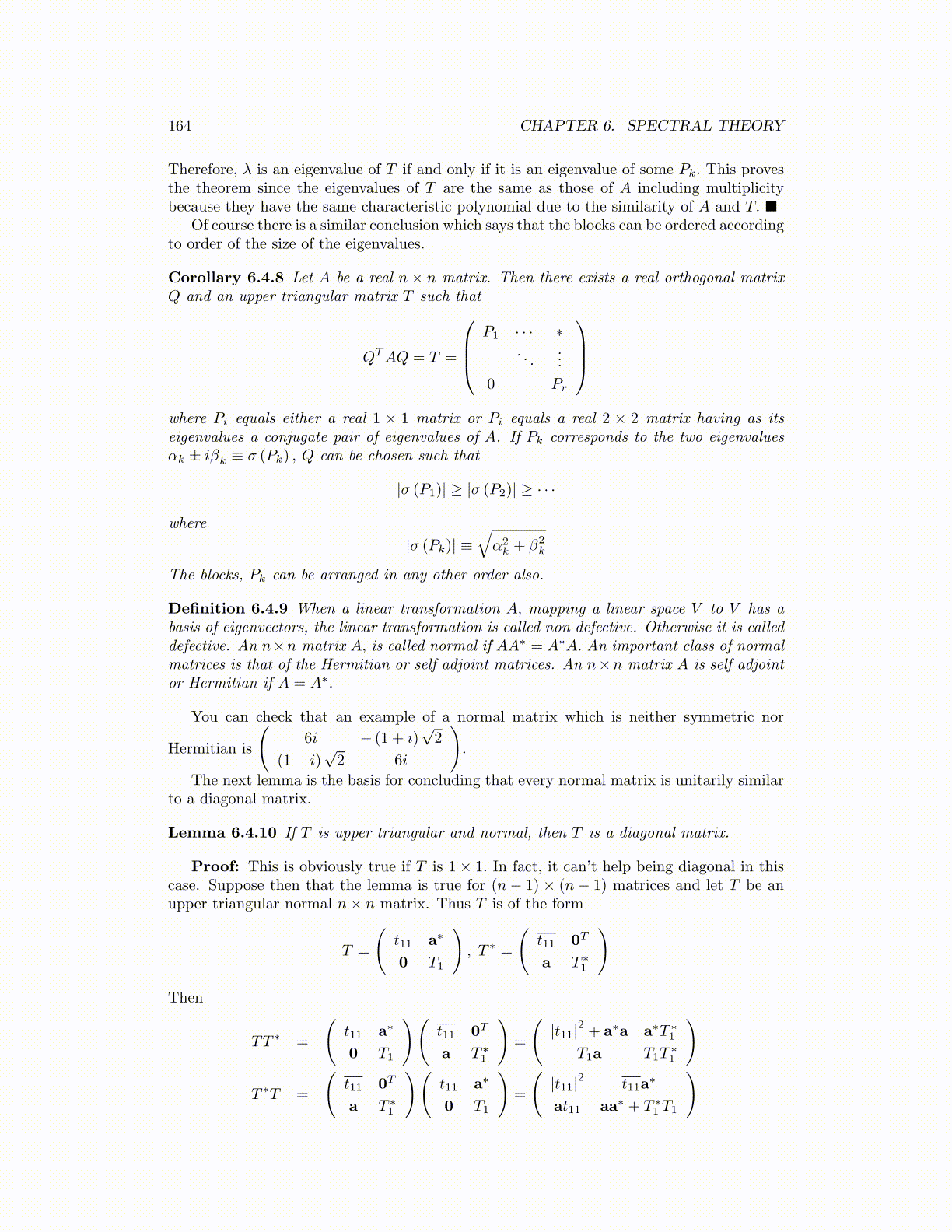
164 CHAPTER 6. SPECTRAL THEORY
Therefore, λ is an eigenvalue of T if and only if it is an eigenvalue of some Pk. This provesthe theorem since the eigenvalues of T are the same as those of A including multiplicitybecause they have the same characteristic polynomial due to the similarity of A and T. ■
Of course there is a similar conclusion which says that the blocks can be ordered accordingto order of the size of the eigenvalues.
Corollary 6.4.8 Let A be a real n× n matrix. Then there exists a real orthogonal matrixQ and an upper triangular matrix T such that
QTAQ = T =
P1 · · · ∗
. . ....
0 Pr
where Pi equals either a real 1 × 1 matrix or Pi equals a real 2 × 2 matrix having as itseigenvalues a conjugate pair of eigenvalues of A. If Pk corresponds to the two eigenvaluesαk ± iβk ≡ σ (Pk) , Q can be chosen such that
|σ (P1)| ≥ |σ (P2)| ≥ · · ·
where
|σ (Pk)| ≡√α2k + β2
k
The blocks, Pk can be arranged in any other order also.
Definition 6.4.9 When a linear transformation A, mapping a linear space V to V has abasis of eigenvectors, the linear transformation is called non defective. Otherwise it is calleddefective. An n×n matrix A, is called normal if AA∗ = A∗A. An important class of normalmatrices is that of the Hermitian or self adjoint matrices. An n×n matrix A is self adjointor Hermitian if A = A∗.
You can check that an example of a normal matrix which is neither symmetric nor
Hermitian is
(6i − (1 + i)
√2
(1− i)√2 6i
).
The next lemma is the basis for concluding that every normal matrix is unitarily similarto a diagonal matrix.
Lemma 6.4.10 If T is upper triangular and normal, then T is a diagonal matrix.
Proof: This is obviously true if T is 1 × 1. In fact, it can’t help being diagonal in thiscase. Suppose then that the lemma is true for (n− 1) × (n− 1) matrices and let T be anupper triangular normal n× n matrix. Thus T is of the form
T =
(t11 a∗
0 T1
), T ∗ =
(t11 0T
a T ∗1
)
Then
TT ∗ =
(t11 a∗
0 T1
)(t11 0T
a T ∗1
)=
(|t11|2 + a∗a a∗T ∗
1
T1a T1T∗1
)
T ∗T =
(t11 0T
a T ∗1
)(t11 a∗
0 T1
)=
(|t11|2 t11a
∗
at11 aa∗ + T ∗1 T1
)